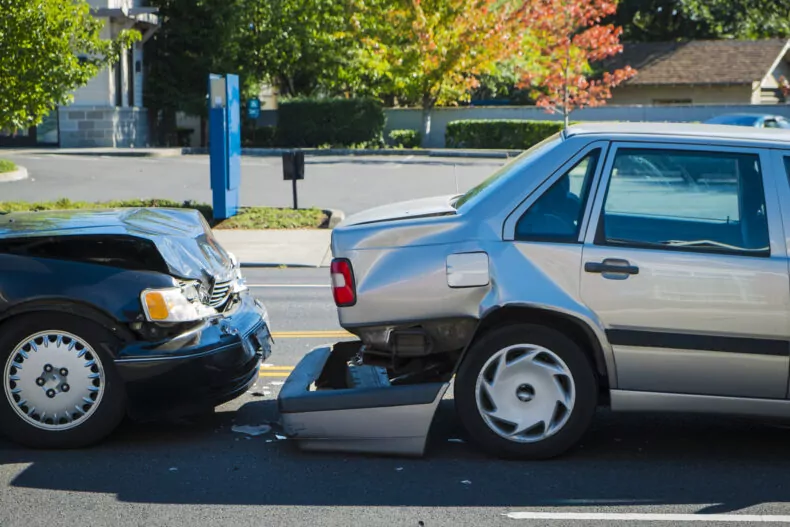How to Prove Negligence in California Car Accidents
Over the past 5 years in California, there have been an annual average of 178,00 road traffic accidents that resulted in either fatalities or injuries. More than 253,00 people die or sustain injuries on California roads each year, highlighting the dangers that motorists and other road users face. With specific reference to pedestrians, an average of almost 14,000 people die or sustain injuries annually.
If you or a loved one has been injured in a car accident in California, you may be entitled to justice and compensation. Central to any personal injury claim in the state is the requirement to prove negligence. In this blog post, your expert team at Alpha Accident Lawyers in California will highlight everything you need to know about how to prove negligence, as well as a driver’s responsibilities when on the road and the role of comparative negligence.
Understanding a Driver’s Responsibilities
Drivers in California have a duty to exercise a reasonable amount of care so that they avoid injuring others while on the road. Per Judicial Council of California Civil Jury Instructions, drivers must use “reasonable care in driving a vehicle”, which includes the following:
- Keep a lookout for other vehicles, pedestrians, and obstacles
- Control the speed and movement of their vehicles
Drivers are also expected to obey traffic laws, be aware of road conditions, and stop to check if anyone sustained injuries in the event of an accident. If someone sustained injuries, drivers must stop and exchange information, as well as give reasonable assistance to any injured people. The failure to use reasonable care in driving is deemed as negligence.
Proving Driver Negligence in California
For a car accident claim to be valid, it is necessary to demonstrate the following elements of negligence:
- The at-fault driver had a duty to operate their car in a manner that is safe (see above)
- The at-fault driver breached this duty in one or more ways
- The actions of the at-fault driver caused the car accident
- The car accident directly caused injuries/monetary losses
There are various forms of driver negligence that can result in accidents and injuries.
For example, distracted driving can include talking on a cell phone, sending a text message, and eating while driving. These distractions can endanger the driver, their passengers, and other road users. In the United States as a whole, approximately 9 people die every day as a result of distracted driving.
Driving a vehicle under the influence of alcohol or drugs is another example. In California, it is illegal to drive with a blood alcohol content of 0.08%. This reduces to 0.04% for commercial vehicle drivers and 0.01% for drivers under the age of 21.
Other examples of driver negligence include:
- Speeding/reckless driving
- Failing to obey traffic signals
- Illegal turns
- Failing to yield right of way
- Tailgating
- Aggressive driving
- Driving while fatigued
- Failing to properly maintain a road vehicle
Proving negligence is often complicated and it is highly advised that you partner with an experienced car accident attorney who has the legal know-how to identify and prove, negligent acts of at-fault drivers. This includes the collection of necessary evidence, thorough investigations, witness interviews, collaboration with accident reconstruction specialists, and much more.
We will help you obtain the evidence necessary to prove negligence in a claim. Our work also includes obtaining evidence of damage, organizing medical records, negotiating with defendants and/or insurers, and negotiating a satisfactory settlement.
Understanding the Role of Comparative Negligence
California is considered to be a “pure comparative negligence” state. Effectively, if you share a part of the fault for causing an accident, you are still able to recover compensation from another at-fault party. This is regardless of the degree of your own fault in the accident.
It is important to understand that any compensation recovered following an accident will be reduced by your percentage of fault. This is the case both within a court-based lawsuit and when a car insurance claims adjuster is determining how much a claim might be worth.
Let’s take a real-world example to better explain comparative negligence. Imagine you were driving when another road user made an unsafe lane change and side-swiped you. According to witnesses and a police report, you happened to be driving a little over the speed limit at the time of the accident.
The accident, should it make it all the way to trial, may be deemed to be 20% your fault and 80% the adult of the driver who made the unsafe lane change. If your total damages following the accident were, say, $20,000 (including medical bills, vehicle damage, and lost income), you may be entitled to 80% of this amount ($16,000) from the at-fault driver. You may not be entitled to the 20% ($4,000) that you were deemed to be at fault for.
How to Prove Negligence in California Car Accidents
The above information highlights you can prove negligence following a car accident in California. Car accidents can have an enormous impact on a person’s quality of life. Many injuries sustained are permanent, life-changing, and can affect their ability to work and enjoy regular activities. If you have been involved in a car accident that was not entirely your fault, it is right that you seek justice and compensation.
In California, your premier choice for filing a suit when it comes to car accidents is Alpha Accident Lawyers. Speak to our team of car accident attorneys today and learn how you can receive the justice and compensation you deserve. We look forward to speaking with you.





